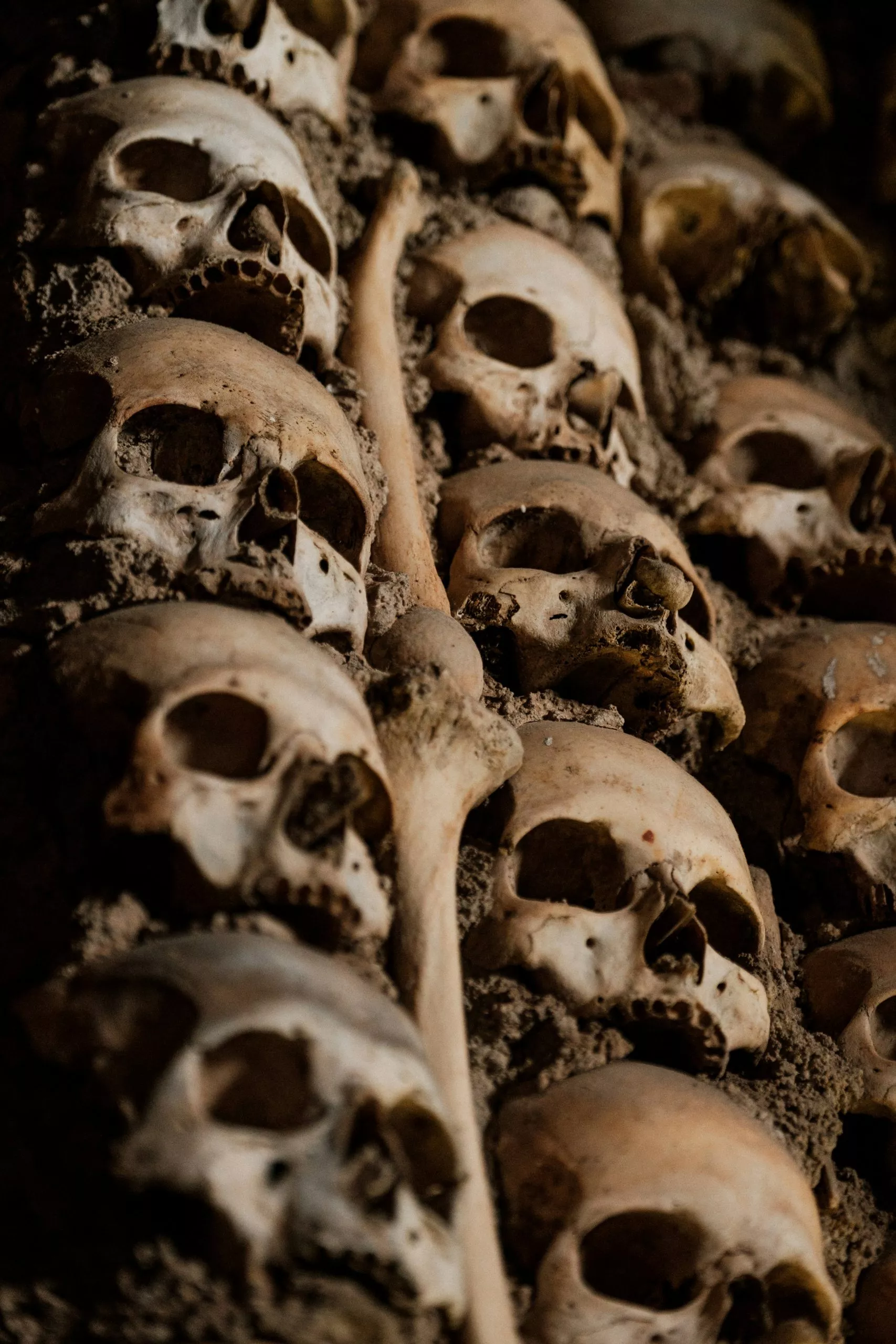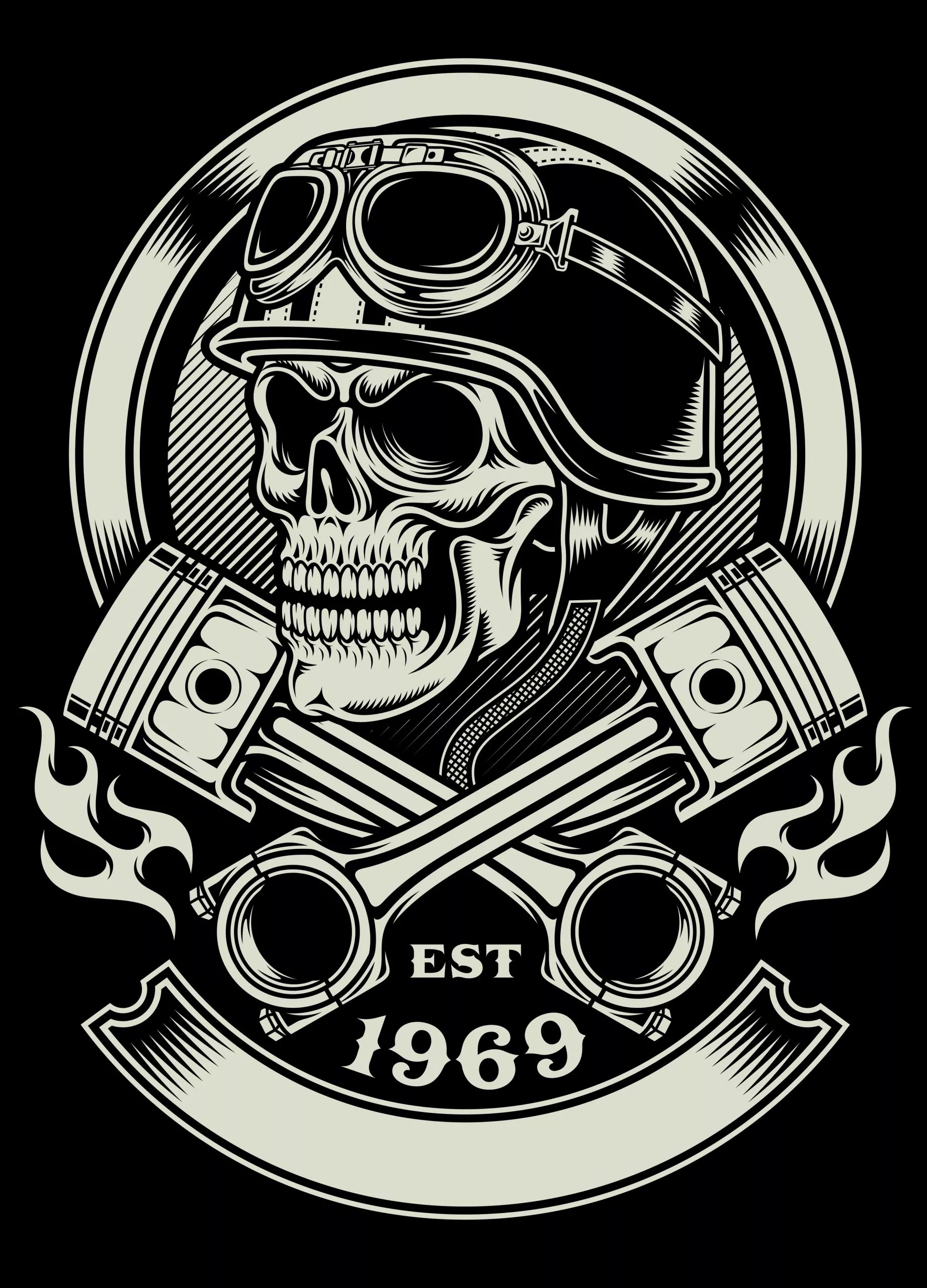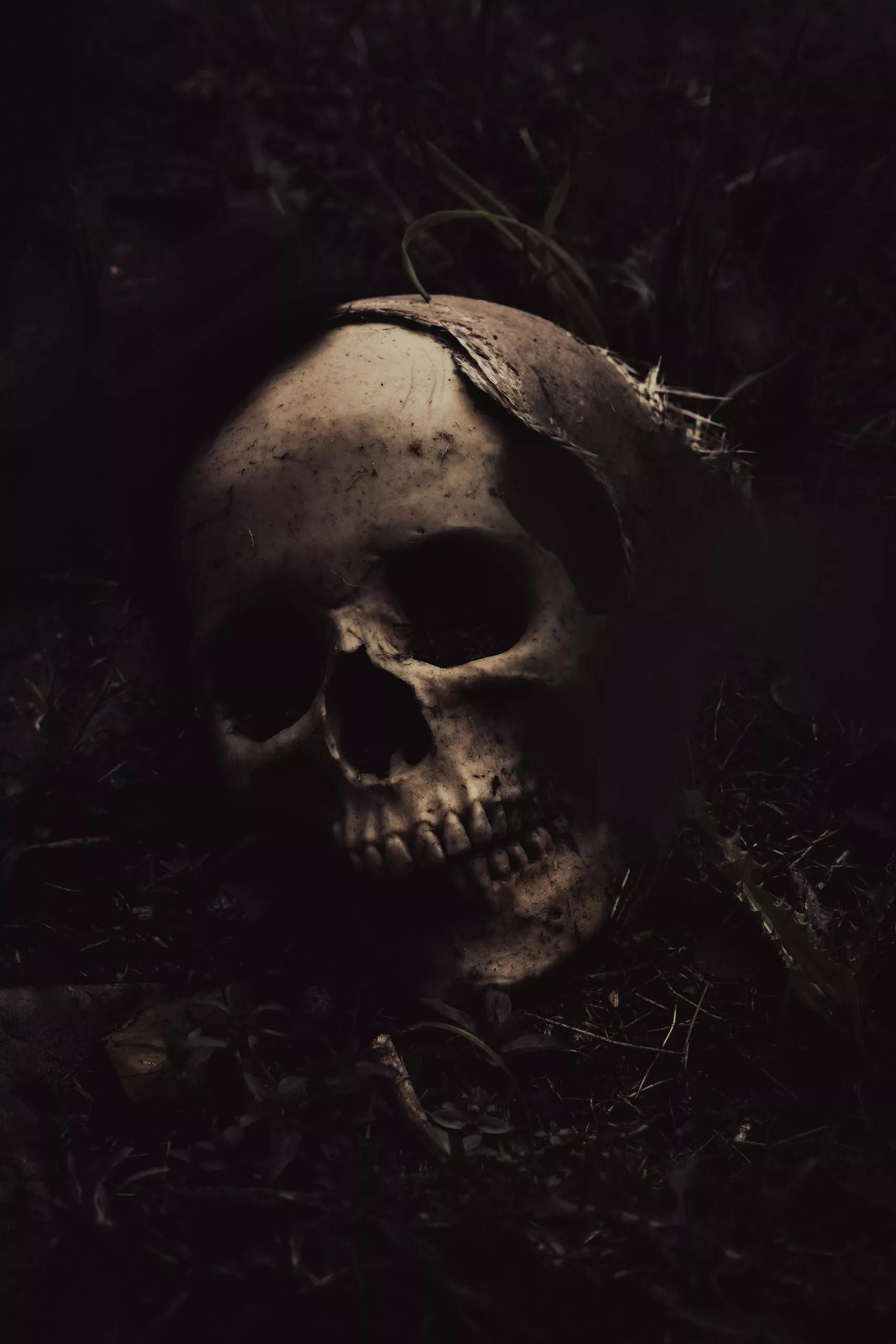In ancient Mesoamerican civilizations, skulls weren’t just remnants of mortality but potent symbols of power and sacrifice. The Aztecs, revered for their military might, adorned battlefields with skulls, signifying victory and state recognition. This tradition, extending to Maya society, showcased a complex interplay of warfare, religion, and cultural norms. Fast forward to contemporary times, and skulls continue to captivate across diverse realms. From the vibrant celebrations of Mexico’s Day of the Dead to the rebellious insignias of motorcycling culture, skulls transcend mere mortality, embodying a spectrum of meanings from defiance to creativity. Join us as we delve deep into the rich symbolism and cultural significance of skulls worldwide.

The Aztecs, known for their formidable military prowess, employed skulls as potent symbols in warfare. These skulls represented defeat, capture, and intimidation, embodying concepts of success, glory, and state recognition. Warriors showcased femur bones to signify prestige, highlighting the importance of symbolism in Aztec culture. The practice extended beyond male warriors to include women and children, shedding light on the sacrifices made by the Aztec Empire.
One striking discovery, the Tower of Skulls near the Templo Mayor in modern-day Mexico City, revealed over 650 skulls, challenging previous assumptions about these displays. This site showcased a diverse mix of victims, emphasizing the widespread nature of this practice within Aztec society.
Aztec warfare was not merely about conquest; it was deeply intertwined with religion and societal norms. The act of sacrificing war captives played a pivotal role in religious ceremonies and festivals. This dual objective of political expansion and religious significance shaped Aztec warfare strategies, emphasizing the complex interplay between power, symbolism, and spirituality in their military endeavours.
In different cultures, skulls serve as potent symbols of change, prosperity, authority, and security, illustrating the multifaceted nature of their meanings. By delving into the symbolic richness of skulls, we uncover a tapestry of beliefs and interpretations that surpass conventional associations with death. Embracing the diverse connotations attached to skulls reveals profound insight into human perception and cultural diversity, showcasing how these symbols transcend their initial representations to embody a spectrum of meanings that resonate deeply with individuals worldwide
The Maya civilization’s perception of beauty and the significance of skulls in their culture offers a fascinating glimpse into their beliefs and practices. The Day of the Dead, marked by vibrant Calaveras skulls, exemplifies a unique celebration of life and death. These colourful skulls, placed alongside offerings on altars, symbolize a joyful connection between the living and the spirits of departed loved ones. This tradition reflects a profound respect for ancestors and a belief in the continuity of life beyond death.
Moreover, the Maya’s unconventional standards of beauty, such as trepanning for skull elongation and admiration for features like crossed eyes and pointed teeth, challenge conventional notions of attractiveness. Body modifications like tattoos and body paint were embraced as expressions of individuality and cultural identity.
The discovery of trophy skulls worn by warriors sheds light on the darker aspects of Maya society, revealing a complex interplay of military prowess, conflict, and power dynamics. These gruesome symbols hint at internal strife and struggle for dominance within the civilization during its later stages.
In essence, the Maya’s diverse perspectives on beauty and the multifaceted symbolism of skulls underscore the rich tapestry of their culture, blending elements of reverence, tradition, and warfare into a compelling narrative of ancient Mesoamerican civilization.


Mexico’s Day of the Dead, known as Día de los Muertos, is a vibrant and culturally significant holiday that pays homage to the skull as a symbol of remembrance and honour for departed souls. This tradition, deeply rooted in indigenous customs, has evolved to incorporate elements of Catholicism, creating a unique and colourful celebration observed on November 1 and 2.
Origins and Symbolism
The origins of this celebration can be traced back to ancient Aztec rituals and beliefs about the afterlife. Sugar skulls, intricately decorated with names, are placed on ofrendas (home altars) to commemorate loved ones who have passed. The belief that the gates of heaven open at midnight on October 31 allows spirits to reunite with their families during this sacred time.
La Catrina
A central figure in Day of the Dead festivities is La Catrina, an elegant skull symbolizing mortality and unity. Originally illustrated by Jose Posada in 1910, La Catrina embodies a fusion of pre-Hispanic traditions and Christian influences, capturing the essence of this revered holiday.
Celebrations
Families construct altars adorned with candles, marigolds, and offerings to welcome back the spirits of their ancestors. Visits to cemeteries involve decorating graves and sharing stories about departed relatives. Festivities include lively parades featuring participants dressed in traditional attire and intricate skull masks in cities like Mexico City, Oaxaca, Aguascalientes, and Merida.
The Day of the Dead serves as a poignant celebration that honours ancestors, celebrates life beyond death, and embraces the enduring connection between past and present generations through a harmonious blend of ancient customs and religious influences.
Skulls play a vital role in motorcycling culture, representing a blend of history, inclusivity, and evolution among bikers.
Historical Roots and Defiance
Originating in the 16th-century underworld associations, skulls were later adopted by outlaw motorcycle groups like “Hell’s Angels” to symbolize bravery and defiance against challenges.
Inclusivity and Unity
The skull acts as a unifying symbol in the biker community, promoting equality and togetherness regardless of gender, age, or social status, fostering a strong sense of camaraderie on the road.
Evolution and Adaptation
As more women join motorcycling, the skull has adapted to include designs with flowers or angelic themes, showcasing the expanding presence of female bikers. Diverse colours and symbols on patches now represent national pride, personal preferences, and loyalty to riding clubs.
Perpetual Symbolism
Despite changes over time, the skull remains a timeless emblem in motorcycling. Whether adorning men’s gear with bold dragons or women’s attire with graceful butterfly motifs, the skull continues to symbolize bikers’ courage and unwavering dedication to their love for riding.


The term “Jolly Roger” initially depicted a cheerful individual in the 17th century but swiftly transformed into a symbol of piracy and danger. Pirate ships utilized the skull and crossbones emblem to communicate their hostile intentions to potential victims. This symbol, now universally recognized, extends beyond piracy, symbolizing resistance against authority and adopted by movements like The Pirate Party.
During the “Golden Age of Piracy” in 1724, notable pirate captains such as Bartholomew Roberts and Francis Spriggs referred to their flags as “Jolly Roger,” each with unique designs. The term’s evolution is evident through its varied historical contexts.
Scholars debate its origins, with theories ranging from the French “Jolie Rouge” to the devil’s moniker “Old Roger.” The iconic skull and crossbones design emerged in the 17th century, inspired by Barbary pirates’ flags. Pirate flags, especially the black Jolly Roger, bore symbols of death or the devil, serving as potent emblems of piracy.
The Jolly Roger was not merely decorative but a bold statement of piracy. Raised when targets were in range, it presented a choice: surrender or face consequences. This flag embodied defiance and rebellion, encapsulating the audacious spirit of piracy and leaving a lasting legacy in maritime history.
Goth culture delves deep into mortality and the afterlife, seeing death as a transition to eternal life. This subculture values discussions on death and rebirth, reflecting a fascination with life’s mysteries. Contrary to misconceptions, Goths don’t embrace death for morbidity but for its acceptance and solitude. They view death as integral to life, fostering resilience and introspection.
Creativity is a cornerstone of Goth culture, drawing inspiration from contemplations on mortality to create innovative expressions challenging societal norms. From literature to fashion, Goths use symbols like skulls to explore themes of death and decay. Through art, music, and fashion, they engage with mortality in profound ways.
While Goth culture may appear enigmatic, it offers valuable lessons on confronting fears of death through creativity and introspection. By embracing this unique perspective, individuals can find solace in the natural cycle of life and death. Goth culture provides a nuanced understanding of mortality, encouraging a deeper reflection on the human experience.


Skulls, iconic symbols of mortality, also serve as poignant reminders of vanity within the human experience. Through artworks such as Charles Allan Gilbert’s famous illustration, the juxtaposition of vanity and mortality invites deep reflection on the ephemeral nature of human life beneath the facade of superficial appearances. This striking connection between vanity and mortality encapsulates profound truths about the transient essence of existence and the inevitable passage of time.
Gilbert’s artwork masterfully captures the duality of human nature, highlighting how our preoccupation with vanity often masks the underlying reality of mortality. By portraying skulls as symbols that transcend mere death imagery to embody deeper philosophical concepts, Gilbert prompts viewers to contemplate the fragility of life and the futility of excessive focus on external appearances.
Exploring this thought-provoking connection between vanity and mortality through artistic expressions like Gilbert’s illustration offers a unique perspective on the complexities of human nature and the universal truths that underpin our existence.
In the realm of contemporary art, skulls have transcended their macabre origins to become iconic symbols of both mortality and aesthetic allure. Renowned artists such as Damien Hirst and Sasha Vinogradova have played pivotal roles in reshaping the perception of skulls, infusing them with new meanings and interpretations. Through a diverse range of mediums and styles, these artists have showcased the versatility of skulls, turning them into fashionable emblems that captivate audiences worldwide.
Damien Hirst’s provocative installations and artworks challenge conventional notions of beauty and mortality, while Sasha Vinogradova’s intricate skull designs blend elegance with edginess, appealing to a broad spectrum of art enthusiasts. The enduring appeal of skulls in contemporary art lies in their ability to evoke deep emotions and provoke thought, transcending cultural boundaries and resonating with audiences on a profound level.
As symbols that straddle the line between life and death, skulls continue to inspire artists to explore themes of transience, identity, and the human condition. Their evolution from macabre motifs to fashionable icons underscores the dynamic nature of art and its power to transform perceptions. In a world where creativity knows no bounds, skulls stand as timeless reminders of the enduring allure of artistic expression.


Artists such as Georgia O’Keeffe have mastered the art of infusing personal narratives into universal symbols, transforming ordinary objects like cow and horse skulls into profound expressions of meaning. By intertwining her own experiences with these timeless symbols, O’Keeffe transcends mere representation, inviting viewers to delve into the depths of her artistic vision.
The beauty of this approach lies in its ability to bridge the gap between the personal and the universal. O’Keeffe’s work serves as a testament to the dynamic nature of artistic expression, where individual stories intertwine with shared symbols to create a tapestry of meanings that resonate across cultures and generations.
Through this fusion, O’Keeffe demonstrates the transformative power of art, showing how personal narratives can breathe new life into age-old symbols, inviting us to explore our own interpretations and connect with the deeper layers of human experience. In a world filled with noise and chaos, O’Keeffe’s art stands as a beacon of introspection and contemplation, reminding us of the profound impact that individual stories can have on shaping our understanding of the world around us.
Q: What are some traditional practices associated with Mexico’s Day of the Dead?
A: Traditional practices include constructing altars adorned with candles and marigolds, placing sugar skulls on ofrendas, visiting cemeteries to decorate graves, and participating in lively parades featuring intricate skull masks.
Q: How do skulls symbolize more than just death in various cultures?
A: Skulls represent a range of meanings, including power, transformation, protection, and cultural identity, across different societies, transcending their association with mortality.
Q: What role do skulls play in motorcycling culture?
A: Skulls symbolize bravery, unity, and inclusivity in motorcycling culture, serving as emblems of defiance against challenges and promoting camaraderie among bikers, regardless of gender or social status.